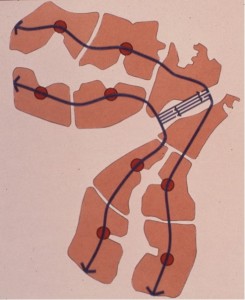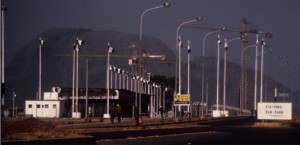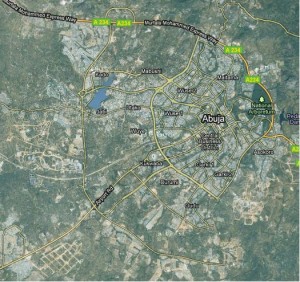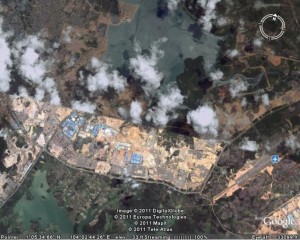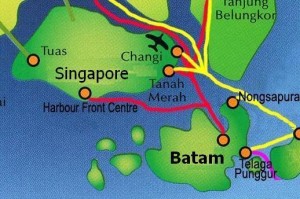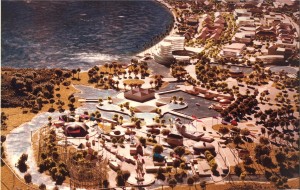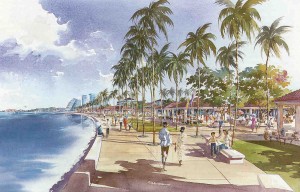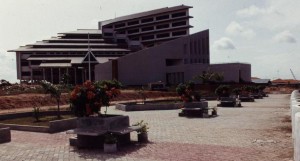The headline in The Atlantic, responding to an earlier article in the New York Times, asks the question, “Are we addicted to gadgets or indentured to work?â€Â (“Silicon Valley Says Step Away From the Device,†Matt Richtel, 7/23/2012, Business Day, New York Times.   “Are We Addicted to Gadgets or Indentured to Work?†Alexis Madrigal, 7/24/2012, The Atlantic.Â
Matt Richtel, writing in The Times, reports that leaders at influential Silicon Valley companies are growing concerned about increasingly widespread addiction to gadgets. Our attraction to smart phones, tablets, and on-line living, some say, reflects “primitive human longings to connect and interact†that threatens to take over our lives. Next year’s edition of the authoritative Diagnostic and Statistical Manual of Mental Disorders, Richtel writes, is slated to include “Internet use disorder†in its appendix, indicating that the mental health profession thinks there may be a real problem but needs more research to understand it.
Responding in The Atlantic, Alexis Madrigal asserts the problem—for Americans, at least—is our slavish devotion to work. We—or the upper middle class that reads the Times, at least—is working more and “having to stay more connected to work than ever before,†forced by employers (with the help of “our strange American political and cultural systemsâ€) to be on the job 24/7. Citing both Mother Jones and McKinsey Quarterly as inspiration, Madrigal suggests that we need not simply to tear ourselves away from our electronic devices, but rather “organize politically and in civil society to change our collective relationship to work.,†adopting a more European perspective on our who controls our time.
Whether their myopia has an ideological or technological basis, both writers are overlooking the fundamental influence of our infrastructure.  In past decades motorized transport and telephone service dramatically reduced the influence of distance as an obstacle to economic and social interactions. The demands of maintaining international business networks and global supply chains shifted our ideas about “banker’s hours†and the sanctity of holidays and weekends.     Radio and television brought education and diversion, evolutionary emergence of “couch potatoes,†and threats to book and newspaper publishing. These new infrastructures also supported and arguably accelerated dramatic expansion of the middle class and service sectors of the economy. These changes went hand-in-hand with accelerating urbanization of our population and suburbanization of our cities.
As difficult as it may be to believe, digital wireless communication and the devices we carry to take advantage of this new infrastructure have become widespread in just about two decades. The technology enables me and my colleagues—all of us somewhere well below the infamous top 2% of the income curve—to work from virtually anywhere and to shift working hours. No longer must I take an entire day off to attend to medical appointments, to have my car repaired, or to attend my child’s school play.
I view this as new freedom rather than a grasping employer’s imposition. Many workers do not yet enjoy such freedom and, as in the past, some jobs are not suited to such changes of practice.
Recent statistics show an international trend of younger people being slower than preceding generations to get their driver’s permits. Citing a study by the University of Michigan’s Transportation Research Institute, for example, MSNBC’s Paul Eisenstein reports that American teens are not rushing to get a driver’s license as soon as they become eligible, and that another study found similar trends in seven of 14 other industrialized countries. (“American teens are waiting longer to drive,†Paul A. Eisenstein, 4/9/2012, MSNBC, Bottom Line)  In their own analysis, the Dayton Daily News found a 9 % drop in Ohio’s 16- and 17-year-old licensed drivers from 2006 to 2010, and a 4.7% decline in the number of Ohio 18-year-olds with licenses.
Analysts suggest the Internet, meaning particularly such new social media and communication applications as Facebook and text messaging, may be a key reason for the change. Whatever the reasons, Eisenstein writes that auto company executives are worried that the trend may signal future declines in new-car demand. Transit advocates are using the data to argue for higher government spending on urban public transportation systems.
How many hours we spend commuting, whether those hours can be used for anything other than steering and avoiding mishap, and whether the hours otherwise spent are counted as work or leisure are topics for another time. Only consider for now the possibility that any purported addiction to gadgets and commitment work are simply short-term byproducts of learning to live with new infrastructure.


